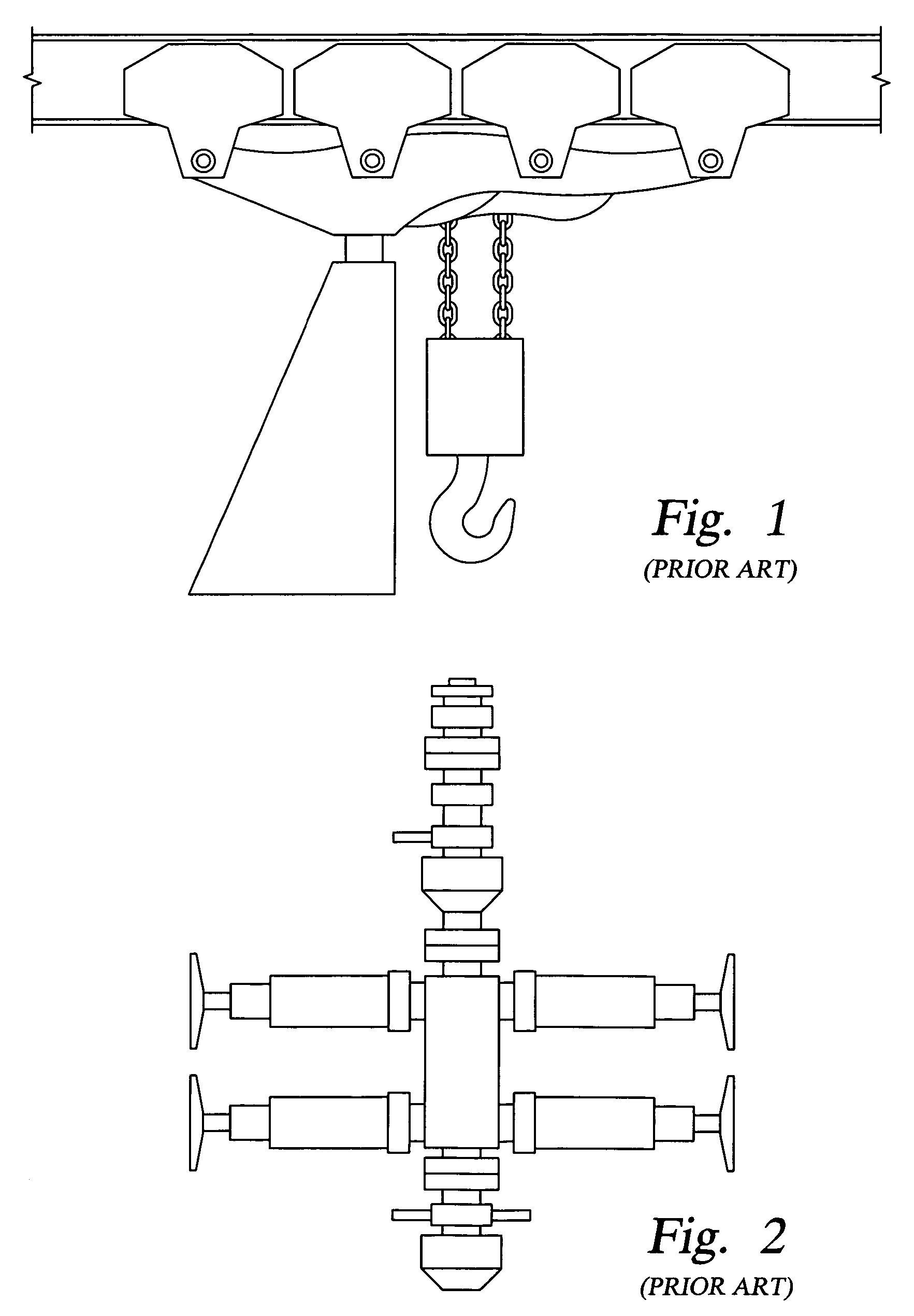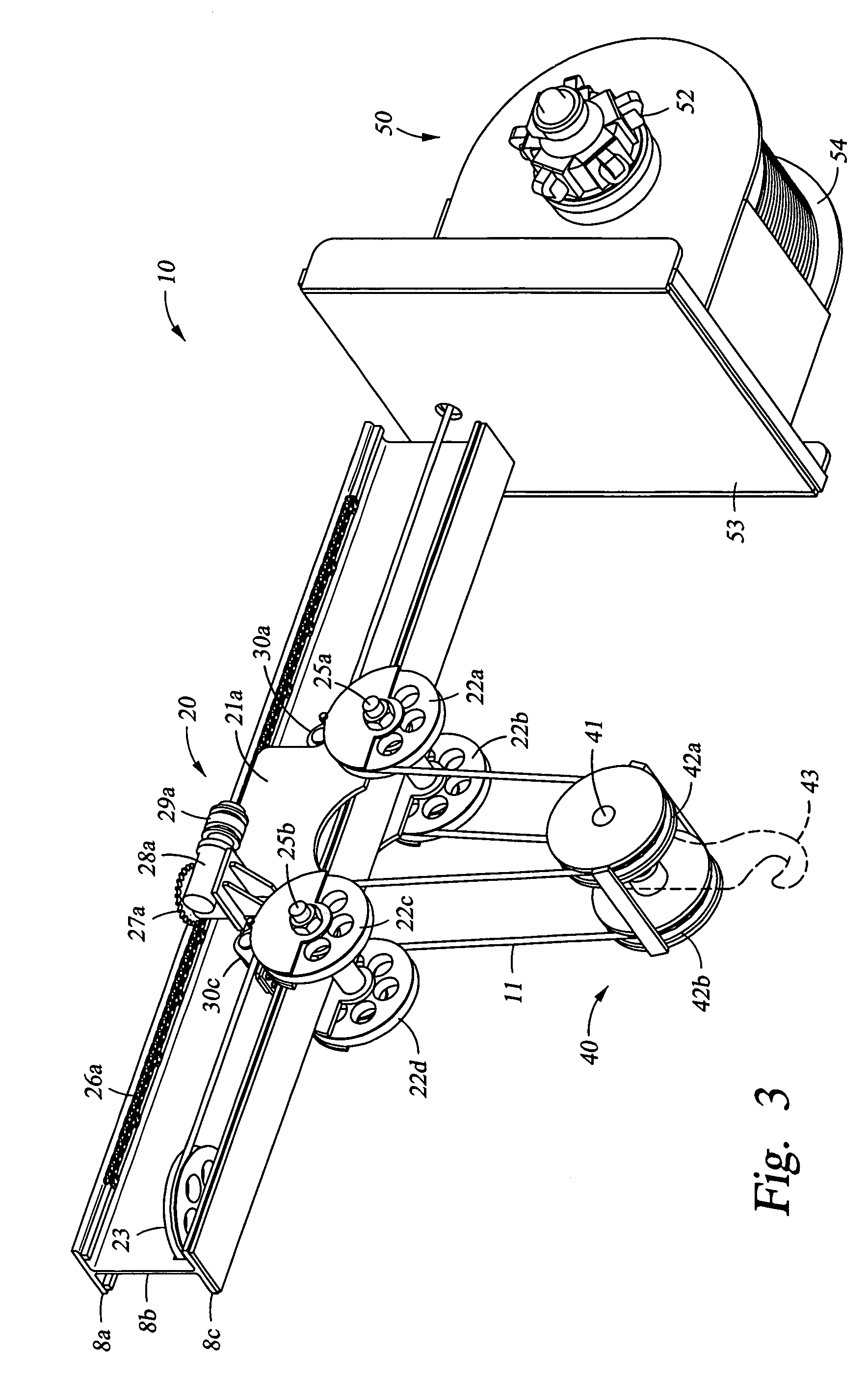Compact hoist for drilling or workover rig
a hoist system and compact technology, applied in the field of hoist systems, can solve the problems of high pressure design, impair the maximum vertical lift capacity of the prior art hoist system, impair the horizontal range of motion and maximum vertical lift capacity etc., to improve the vertical and horizontal range of operation of the hoist system, improve the hoist speed and versatility, and eliminate chain failures
- Summary
- Abstract
- Description
- Claims
- Application Information
AI Technical Summary
Benefits of technology
Problems solved by technology
Method used
Image
Examples
Embodiment Construction
[0045] The present invention provides a hoist system and methods for its use that are useful for lifting and positioning equipment, such as BOPs, on an oil or gas well rig. For purposes of using the drawings to support the disclosure herein, it is required that terminology for referring to various similar or identical components of the invention be defined. In referring to the above-reference drawings, “proximal” is used to refer to components or portions of components disposed nearer to the grooved drum, and “distal” is used to refer to components or portions of components disposed nearer to the equalizing sheave that is opposite the grooved drum relative to the trolley portion. “Front” is used to refer to components or portions of components in the foreground of the above-referenced drawings relative to the I-beam center portion along which the trolley portion travels, and “rear” is used to refer to those components or portions of components on the opposite side of the I-beam cent...
PUM
 Login to View More
Login to View More Abstract
Description
Claims
Application Information
 Login to View More
Login to View More - R&D
- Intellectual Property
- Life Sciences
- Materials
- Tech Scout
- Unparalleled Data Quality
- Higher Quality Content
- 60% Fewer Hallucinations
Browse by: Latest US Patents, China's latest patents, Technical Efficacy Thesaurus, Application Domain, Technology Topic, Popular Technical Reports.
© 2025 PatSnap. All rights reserved.Legal|Privacy policy|Modern Slavery Act Transparency Statement|Sitemap|About US| Contact US: help@patsnap.com



